Corpus of Evidence
The core lexicographic evidence used for the Thesaurus consists of an archive of approximately 10 million paper slips, lemmatised by word. Much of this material was produced in the earliest phases of the project, but it continues to grow as new inscriptions and new editions are published. The slips mainly contain quotations from ancient sources (Belegzettel), but some contain references to concordances, books, journal articles, and other secondary literature (Literaturzettel). Text slips often include important textual variants, conjectures, and interpretative supplements, added either when the slip was produced or later when it was worked on for the publication of an article. During the production of an article, the accuracy and representativeness of this material is carefully checked against the most recent critical editions and electronic databases. As a result, the archive retains its value as a resource even after the publication of an article.
Production of the Slips
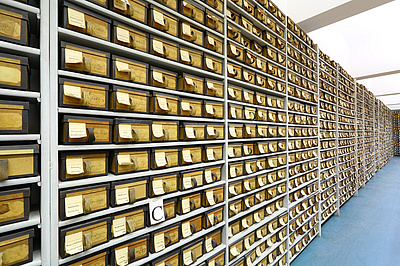
Earlier texts (everything until approximately AD 200, including Apuleius) and later texts (until approximately AD 600) are represented within the archive in two different ways. Earlier texts were reproduced in their entirety, word for word, and replicated mechanically on slips. Within the later material, some representative works from each genre were reproduced in their entirety, in the same way as the earlier sources. The rest of the material was given to experts in the relevant subjects, who read through the texts in their entirety and excerpted only those occurrences that appeared linguistically remarkable in some way, whether in spelling, meaning, or syntax. A list of the experts involved can be found here.
The original slips: complete texts
Textual slips make up the largest part of the material. Each text was divided up into sections in the standard editions of the time and significant conjectures or variants were noted in the margin.
These sections were written out on lithographic paper and mechanically reproduced, so that each word of the section could have its own slip. These were then lemmatised and ordered by lemma. From the earliest transmitted texts to around AD 200 the whole of Latin literature was included in the material. Slips were also made for inscriptions, papyri, coins and the like. All this material was prepared between 1894 and 1899 and has been continuously updated since then.
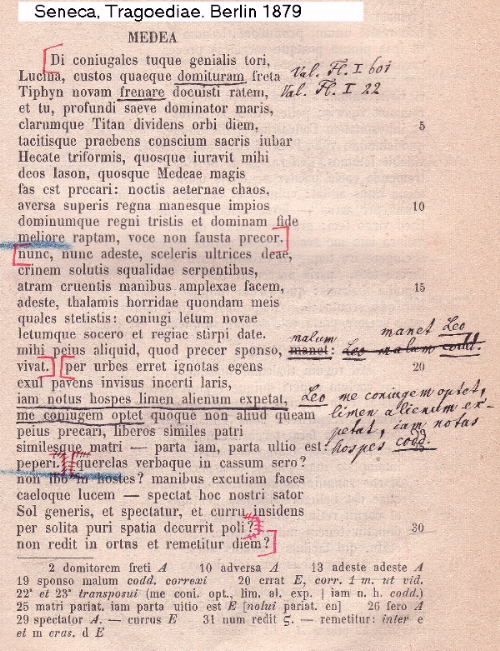
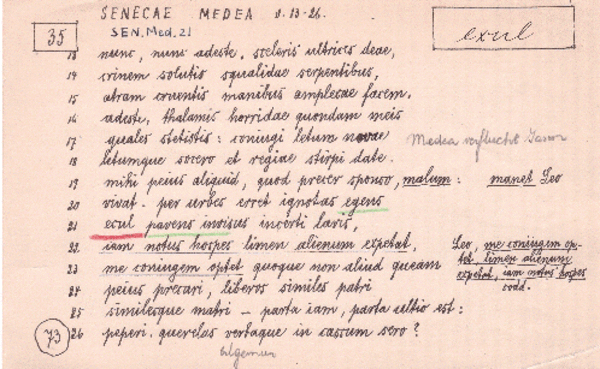
Excerption of texts after AD 200
For the period after Apuleius (ca. AD 200) only a selection of sources were completely included in the archive, either by being copied entirely onto slips, as described above, or with slips that refer to published indices and concordances. The following later texts have been included completely: the Digest, Minucius Felix, Tertullian, Cyprian, the Historia Augusta, Arnobius, Iuvencus, the Peregrinatio Aetheriae, Avienus, a selection of Jerome’s letters (1–65), the Vulgate, Prudentius, Augustine’s De civitate dei, Commodian, the Codex Theodosianus and Codex Iustinianus, Boethius’s Consolatio, the Regula magistri und Regula Benedicti.
Most texts were excerpted. In other words, they were read by experts in the relevant author or source, and slips were produced only when an occurrence seemed unusual in some way, for example for its syntax, meaning, or spelling. This procedure prevented the accumulation of examples that simply repeat what is attested hundreds of times already in the earlier data. It also enables the lexicographer to concentrate on lesser known lemmata or on what is syntactically or semantically noteworthy.
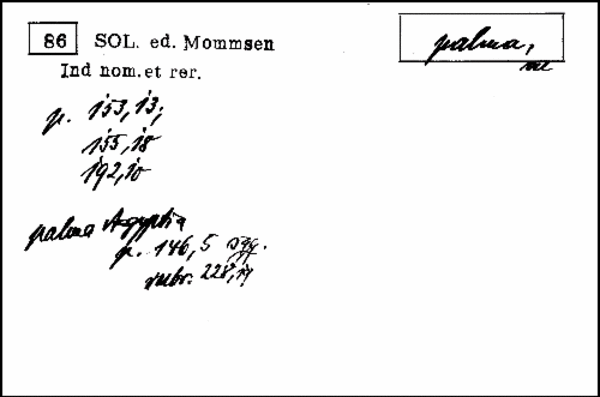
Excerption from inscriptions
The chronological boundaries were set differently for inscriptions. Of these only the republican inscriptions edited in CIL I were completely covered; to these the inscriptions of the city of Rome in CIL VI were added when a concordance to this volume became available. All other inscriptions are only excerpted.
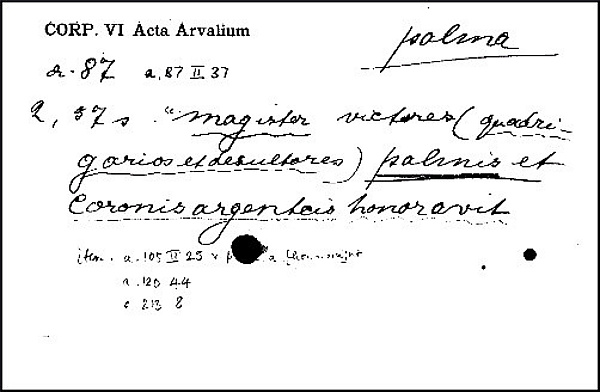
Updating the slips
Since the completion of the original excerption in 1899, our material has been extended in two ways. Firstly by taking in newly discovered texts (such as the Latin tablets from Vindolanda) or text versions (for instance in the Beuron edition of the Vetus Latina), secondly by using new editions of already known texts.
Silius, Punica 2, 282 provides an example. In the edition of Ludwig Bauer (1890), the line runs: 'testabor superos et caelo nota relinquam', 'I shall call on the gods as witness and leave it known to heaven'.
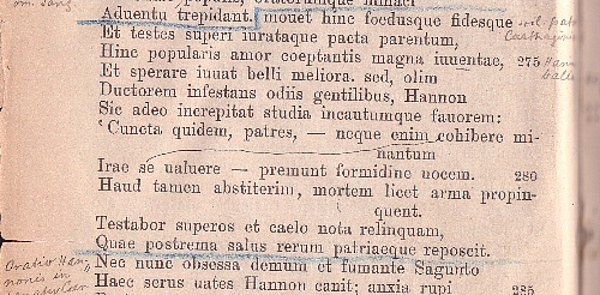
Accordingly there was a slip for this passage under the lemma ‘notus’.
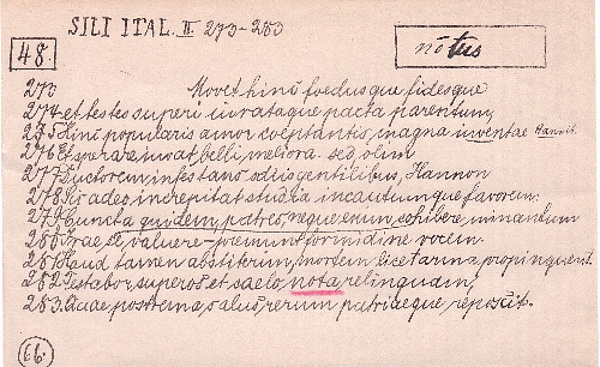
In his new edition Josef Delz decided to print the reading ‘vota’ rather than ‘nota’, ‘I shall call on the gods as witness and leave my prayers to heaven’.
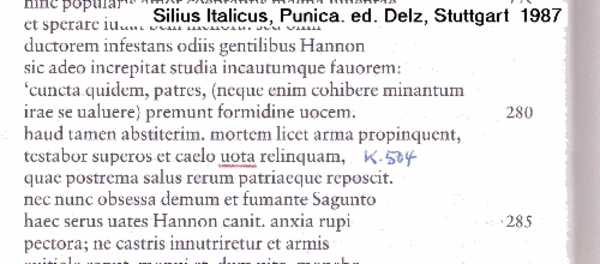
From this a slip was now also added under ‘votum’, so that the passage can be considered when the article ‘votum’ is written.
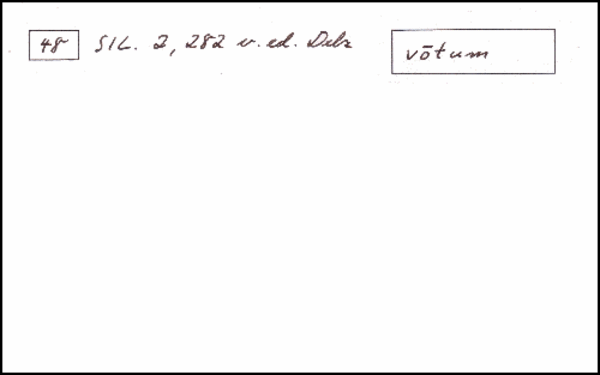
Slips for secondary literature
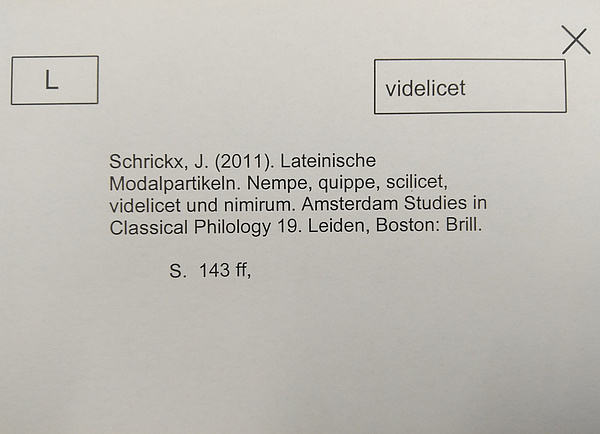
In addition to slips containing primary sources, there are slips with references to books and journal articles, which are constantly being added to the archive.
